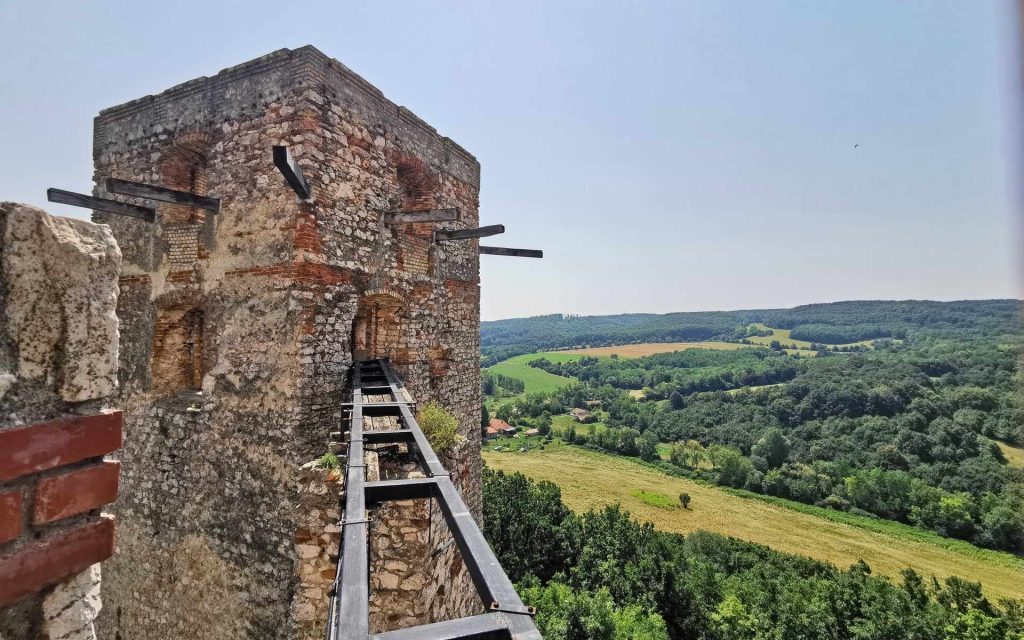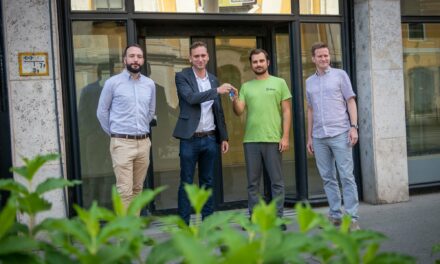Despite enemy armies and devastating lightning strikes, Czesznek Castle was one of the strongholds of Transdanubia for centuries, and its varied history is rich in outstanding personalities and twists and turns.
The serpentine winding through the forests of Bakony presents a fairytale sight to the traveler when he glimpses the rustic walls of the fortress perched on the sásběr. Even in its ruined state, Czesznek Castle is an imposing structure and a popular tourist destination in Transdanubia.
Like most Hungarian fortresses, the castle may have been built during the "castle-building wave" after the Tatar invasion. It is conceivable that there was already a watchtower on the rock of the fortress, the limestone cliff that was created in the middle ages of geological history. It is certain that a strong stone castle was built in Cseszne only in the second half of the 1200s.
A luxurious castle from a Puritan residential tower
The first Árpád-era castle may have been a residential tower, which was supplemented with a wall and possibly small cottages. This castle was given as a royal gift to King II. Miklós Garai, who demolished the former residential tower residence and had a luxurious Gothic-style new castle built in its place. According to wall excavations, the inner structure of the palace, the Wathay watchtower and some parts of the outer castle were built at this time.
The construction of the Garai castle may have taken place between 1392 and 1424. We can be quite sure of the latter year, as mementos of the glorious event, a commemorative plaque and a goal stone have been preserved for posterity. These particularly rare Gothic monuments are currently kept in the Hungarian National Museum.
One of the most serious lawsuits in medieval Hungary is connected to the Garai family. II. Miklós Garai and his brother János Garai were also married in marriages of convenience. While Miklós's marriage to the Cilleiks turned out to be a good decision in the long run, the same cannot be said about his younger brother, János, who married Princess Hedvig of Mazovia from Poland. Hedvig and János did not like each other, in which their roughly 20-year age difference may have played a big role.
The tragically sudden death of János Garai was linked to poisoning by Hedvig. The princess was put on trial and sentenced to confiscation of property and life imprisonment. Hedvig had to spend the rest of her life in a Garai castle. According to historians, this Garai castle could have been from Czeszne, as a medieval brick structure eerily resembling a tomb was found in the eastern palace wing, and an engraving can be seen on the brow stone of the Gothic gate. The experts believe that after the lawsuit, the joint family coat of arms of Hedvig and János could have been carved from it.
The Chesnek triumph
After the extinction of the Garai family, Csesznek again became a royal castle, and then in the XVI. by the end of the century it was owned by different families. István Csaby was the castle captain of Eger in the XVI. in the first half of the 20th century, one of the owners of the castle, but after his death, his son also died a few years later, so the castle was left to his two sons-in-law, Sebestyén Szelestyei and Lőrinc Wathay, due to the lack of blood male relatives. Sebestyén was not a soldier, he quickly "escaped" from his duties as castle captain and the castle passed to his brother-in-law, Lőrinc Wathay from Vág.
Wathay was castle captain in Csesznek for a total of 16 years, which was considered a long career in that era. With the fall of Veszprém in 1552, the presence of the Turks in this part of the Bakony became permanent, so Lőrinc was the master of the fortress during one of the most dangerous periods of the castle's military history.
Wathay is credited with the victory in Chesznek in 1561, during which the Turkish army broke through the gate tower and ransacked the lower castle of Chesznek. Wathay was a strategist of outstanding ability, he recaptured the half-occupied castle in the midst of great slaughter, thus achieving enormous success. A painting was also presented about the event on August 16, 2024, commemorating the glorious moment.
The entire article can be read on SokštátVidík!
Featured image: Péter A. Tóth/SokszátVidék













